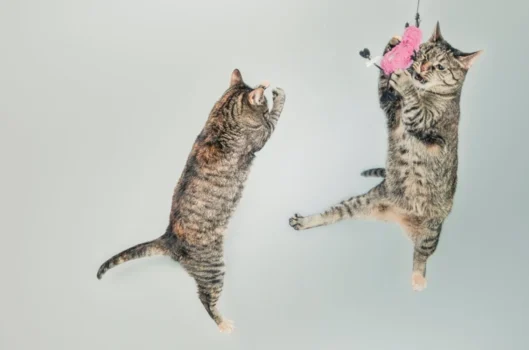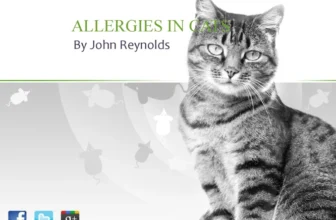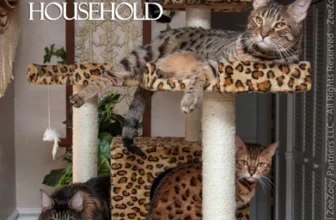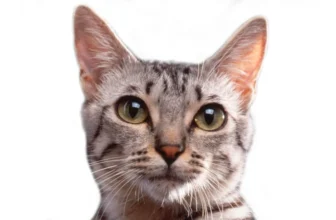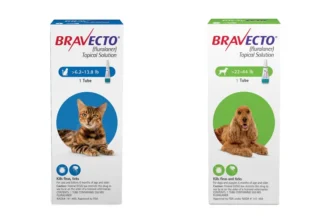First-time cat owners may feel overwhelmed about the prospect of taking their California Spangled cat to the vet for vaccinations. It’s completely understandable to be perplexed and somewhat intimidated by the process. However, vaccinating your cat is crucial to keeping them healthy and happy. This step-by-step guide will provide you with everything you need to know to prepare your feline friend for vaccinations, including pre-visit anxiety reduction techniques, what happens during the vet visit, and what to do after the visit. So, let’s get started!
Why Vaccinations are Important for Your Cat
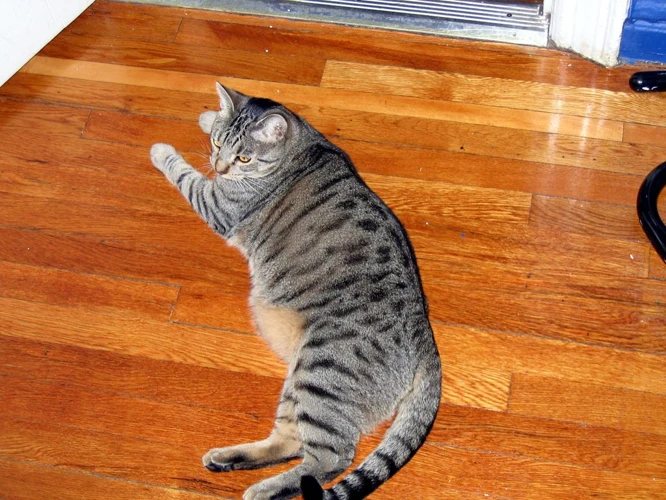
Ensuring the good health of our furry friends should be a top priority for all pet owners. One way to safeguard their well-being is by vaccinating them against various diseases. Vaccinations for your California Spangled cat are crucial in order to prevent them from contracting potentially fatal illnesses. As a responsible pet owner, it’s important to remember that prevention is always better than cure. That’s why it’s essential to understand the importance of vaccinations, which vaccines your cat needs, and how to prepare for and what to expect during the vet visit. Here’s what you need to know. To learn more about a specific vaccination schedule, please refer to the CA Spangled Cat Vaccination Schedule.
The Importance of Vaccinations
Vaccinations in pets, including cats, are crucial for maintaining their health and protecting them from contagious diseases. Preventative care is always the best course of action. Just like humans, animals need to get vaccinated to stay healthy and avoid contracting illnesses that could cause severe harm to their well-being. Vaccines help your cat develop immunity against various pathogens that can cause serious and sometimes fatal diseases.
Vaccines work by exposing cats to small, harmless quantities of viruses, bacteria, or other microorganisms that cause a specific disease. These “fake” pathogens assist the cat’s immune system in building immunity such that if a real threat is encountered, the cat’s defenses can recognize and destroy the infectious agent quickly. This immunity is critical to the health and longevity of your feline friend.
Vaccinations are especially important for California Spangled cats because they are a rare breed, and there is a limited gene pool. They are also prone to specific genetic conditions, making them more vulnerable to infections and diseases that other breeds can fight off without vaccinations. A comprehensive vaccination schedule is crucial to maintaining their health and well-being.
It is essential to follow the recommended vaccination schedule for your California Spangled cat, which is provided by your veterinarian. The vaccination schedule should start early on, when the cat is a kitten, and continue through adulthood according to the appropriate vaccination timetable. This ensures that the feline is adequately immunized against potential diseases and viruses.
Common vaccines used in California Spangled cat vaccination schedules include rabies, FVRCP, feline leukemia virus (FeLV), chlamydia, and feline immunodeficiency virus (FIV). Each vaccine has a specific function in keeping your cat healthy. Rabies vaccines are required by law in most states, and the other vaccines mentioned above are also essential to keep your cat healthy and safe.
It’s crucial to ensure that your cat receives all the recommended vaccines on time. The vaccination schedule typically spans a few years, so it’s best to stick to the schedule and attend every appointment. By doing so, you’re keeping your cat immunized against common feline illnesses and helping to prevent contagious disease outbreaks.
Remember, vaccinations are essential to your California Spangled cat’s health and wellness. To learn more about vaccination schedules, visit our article on CA Spangled cat vaccination schedules.
Which Vaccines Does My Cat Need?
Vaccinations are a crucial aspect of keeping your California Spangled cat healthy. Knowing which vaccines your cat needs is important to ensure they stay protected against common diseases. The core vaccines for cats include:
- Feline Panleukopenia (FPV) – This is a highly contagious viral disease that affects a cat’s intestines, bone marrow, and immune system.
- Feline Calicivirus (FCV) – This is a common respiratory infection that can cause symptoms ranging from mild to severe.
- Feline Rhinotracheitis Virus (FHV) – This is a highly contagious respiratory infection that can cause severe symptoms in young kittens and older cats.
In addition to the core vaccines, there are also non-core vaccines that may be recommended based on your cat’s lifestyle. Some examples of non-core vaccines include:
- Feline Leukemia Virus (FeLV) – This virus is spread through contact with an infected cat and can cause leukemia and other deadly diseases.
- Feline Infectious Peritonitis (FIP) – A rare but deadly viral disease that affects cats.
- Chlamydophila felis – This is a bacterial infection that can cause conjunctivitis and respiratory issues in cats.
It’s essential to consult with your veterinarian about which vaccines are necessary for your cat. Vaccination schedules may vary depending on your cat’s age, lifestyle, and medical history. Keeping your California Spangled cat up-to-date on their vaccines will help protect them from potentially life-threatening diseases. To learn more about California spangled cat vaccination, you can visit Cali Spangled Cat Vaccination. Also, you can find information about common vaccines used in California Spangled Cat vaccination schedules in Common Vaccines Used in California Spangled Cat Vaccination Schedules.
How to Prepare Your Cat for Vaccinations
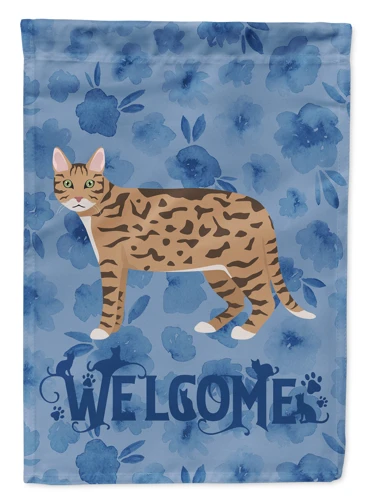
Preparing your cat for vaccinations can be a stressful experience for both you and your furry friend. However, there are steps you can take to make the process as smooth and easy as possible. By taking the time to properly prepare and familiarize your cat with the vet visit, you can help ensure that your cat stays calm and comfortable throughout the procedure. In this section, we’ll go over some important tips and tricks you can use to prepare your cat for vaccinations. Let’s dive in!
1. Find a Calm Atmosphere
It’s important to find a calm atmosphere before taking your California Spangled Cat to the vet for vaccinations. Cats are sensitive to their surroundings and can easily become stressed, which can make the experience more difficult for both you and your cat. Here are some steps you can take to create a relaxing environment for your cat:
- Choose a quiet room: Find a peaceful room in your house where you can spend time with your cat before the appointment. Keep noise levels low and avoid playing loud music or watching TV.
- Use calming scents: Natural scents like lavender or chamomile can have a relaxing effect on cats. You can use aromatherapy or diffuse essential oils in the room to create a calming environment.
- Provide your cat with a comfortable space: Make sure your cat has access to a cozy bed or blanket where they can relax. You can also provide a few toys to keep them occupied.
- Minimize stressors: If you have other pets in the house, make sure they are kept in a separate room. Turn off any appliances that may be loud or unsettling.
By creating a calm atmosphere, you can help your California Spangled Cat feel more comfortable and relaxed before their appointment. This can make the experience less stressful for them and help them to be more cooperative during the vet visit.
2. Get Your Cat Used to Handling
Handling your cat properly is important for its general well-being and overall positive experience at the veterinarian’s office. Before the visit, it’s essential to get your cat used to handling to reduce its stress. Here are some useful tips to get your cat used to handling:
- Start Slowly: Start by touching your cat’s paws, tail, and ears for short periods, gradually increasing the duration to get your cat accustomed to handling. Offer treats as a reward to help the cat associate touch with pleasant experiences.
- Use Desensitization Techniques: Introduce your cat to different sounds and sensations gradually. For instance, expose the cat to different noises like doors opening and closing, hairdryers, or vacuum cleaners. This technique helps reduce anxiety and fear caused by unfamiliar sounds at the veterinary clinic.
- Train Positive Behaviors: Encourage your cat to be comfortable with different handling positions by gradually introducing them. For instance, put the cat on the ground and stroke it while it’s lying on its side. Reward good behavior with a treat, increasing their comfort level with as many handling practices as you can.
- Use Treats and Toys: Use treats, games, and rewards to reward your cat for good behavior. When handling your cat, offer treats to create a positive association with handling or use toys as a distraction to keep your cat relaxed while being handled.
- Be Gentle: Always handle your cat gently when getting them used to handling. Cats have sensitive areas that, if prodded roughly, can make them feel uncomfortable or scared. Use a gentle touch, and avoid making any sudden or abrupt movements.
By familiarizing your cat with handling before the veterinary visit, you can help your cat become more comfortable with being touched, thus reducing their anxiety level. This technique, combined with others in the preparation process, will help make the veterinary experience more positive and less stressful for your beloved California Spangled Cat.
3. Familiarize Your Cat with the Carrier
Transporting your California Spangled cat in a carrier can be stressful for both you and your furry friend. Taking the time to familiarize your cat with the carrier can help reduce anxiety and make the trip to the vet much smoother. Here are some tips on how to do it:
- Leave the carrier out: get the carrier out a few days before the vet visit and leave it in a spot where your cat usually hangs out. This way, he or she can explore it on their own time.
- Add Comfort Items: to encourage your cat to go inside the carrier, leave a soft blanket or towel inside. You might also add some of your cat’s favorite toys or treats.
- Use Positive Reinforcement: reward your cat every time he or she goes inside the carrier by giving treats or praise. This will help your cat associate the carrier with positive experiences.
- Practice Short Trips: once your cat is comfortable being in the carrier, take him or her on short trips around the block or to a nearby park. This will help your cat get used to being in the carrier while in motion.
- Avoid Force: Never force your cat into the carrier as this can create negative associations. Instead, let them approach it on their own terms.
These simple steps can help your California Spangled cat become more comfortable with the carrier, making trips to the vet less stressful for both you and your feline companion.
4. Make Sure Your Cat is Comfortable in the Car
When it comes to transporting your California Spangled Cat to the vet for vaccinations, it’s important to ensure their comfort in the car. Here are some steps you can take to make the trip as stress-free as possible for your feline friend:
- Use a Comfortable Carrier: Your cat should have plenty of room to move around in their carrier, but it should also be snug enough to make them feel secure. A soft, padded carrier can help keep your cat comfortable during the ride.
- Place Your Cat’s Carrier in a Safe Spot: When driving, place the carrier on a flat surface, such as the floor of the passenger seat or the back seat. Make sure the carrier is securely fastened with a seatbelt or some other form of restraint to prevent it from shifting during the trip.
- Avoid Loud Noises: Loud noises can be very stressful for your cat, so consider playing soft music or turning down the radio during the ride to keep things calm and quiet.
- Control the Temperature: Make sure the car is at a comfortable temperature for your cat, neither too hot nor too cold. Cracking a window can help regulate the temperature and provide good ventilation.
- Provide a Familiar Smell: Cats rely heavily on their sense of smell, so try placing a piece of your clothing or blanket with your scent on it into their carrier. This can help your cat feel more at ease during the trip.
By taking these steps, you can help ensure your California Spangled Cat is as comfortable and relaxed as possible during the car ride to the vet for their vaccinations. This can help reduce stress and anxiety, making the overall experience more positive for both you and your feline friend.
5. Pre-Visit Anxiety Reduction Techniques
Preparing your California Spangled cat for vaccinations can be a daunting task, but there are several anxiety-reducing techniques you can use to make the process easier for both you and your furry friend. Here are some pre-visit techniques that can help reduce your cat’s anxiety before the vet visit:
- Use Pheromone Sprays: Feline pheromone sprays are effective in reducing anxiety and promoting relaxation in cats. You can spray the pheromone spray in your cat’s carrier before the visit. This will help your cat feel more comfortable and relaxed in its carrier.
- Play Soothing Music: Playing soft and calming music can help in reducing anxiety in cats. The soothing music can drown out the sounds of the vet clinic, which can cause anxiety in your cat.
- Diffuse Essential Oils: Essential oils such as lavender or chamomile can help calm down your cat’s nerves. You can diffuse these oils in your home before the visit or put a small amount on your cat’s carrier. Make sure to check with your vet before using essential oils, as some may be harmful to cats.
- Practice Handling: Touching and handling your cat gently and frequently can help your cat be more comfortable with being touched by strangers, including vets. You can also practice opening your cat’s mouth, ears, and feet so that your cat is more comfortable during the physical exam.
- Use Treats: Treats are a good distraction and can help reduce your cat’s anxiety before the visit. You can use treats to reward your cat for positive behavior, such as getting into the carrier easily or staying calm during the car ride.
- Calming Supplements: If your cat has severe anxiety about vet visits, you can ask your vet about anti-anxiety medications or supplements. These can help calm your cat’s nerves and make the visit less stressful.
By using these pre-visit anxiety reduction techniques, you can help your California Spangled cat feel more comfortable and relaxed before the vet visit. This will help make the process easier for both you and your beloved pet.
6. Avoid Feeding Your Cat Before the Visit
When preparing your California Spangled Cat for vaccinations, it’s important to avoid feeding them before the visit. This is because a full stomach may lead to discomfort, which could make your cat more irritable and difficult to handle during the visit.
Feeding Schedule
To ensure that your cat is hungry enough to eat at the veterinary clinic, avoid feeding your cat for at least four hours before the appointment. Ideally, you should feed your cat their regular meal the night before the appointment. If your cat is used to snacking throughout the day, limit their access to food a few hours before the appointment.
Hydration is Important
Although it’s important to restrict your cat’s food intake, it’s equally important to make sure they are hydrated prior to the visit. Make sure that your cat has access to fresh water leading up to the appointment.
Why Feeding Beforehand is Problematic
Feeding your cat right before their veterinary visit can cause a number of problems, including:
| Problem | Explanation |
|---|---|
| Discomfort | If your cat has a full stomach, they may feel uncomfortable during the exam. This could make it difficult for the veterinarian to perform a thorough exam and properly administer the vaccines. |
| Increased Stress | A full stomach can also lead to increased stress, making your cat more anxious and difficult to handle during the visit. |
| Dehydration | If your cat has access to food throughout the day, they may not drink as much water. This could lead to dehydration, which could make the experience more uncomfortable for your cat. |
By avoiding feeding your California Spangled Cat before their veterinary visit, you’ll ensure that they are more comfortable, less stressed, and easier to manage during the appointment. This will make the visit more successful overall, and increase the chances of your cat staying healthy and happy.
7. Bring Your Cat’s Medical Records
It’s essential to bring your California Spangled Cat’s medical records with you when it’s time to get vaccinated. These records help the veterinarian to provide appropriate preventative care for your furry friend. The records give your vet insight into the cat’s medical history, which might help them diagnose any problems quickly.
So, what records should you include in your cat’s medical records?
Here is a table to provide some guidance:
| Record | Description |
|---|---|
| Vaccination certificates | Documents that prove your California Spangled Cat has received vaccinations in the past. These certificates serve as a record of the cat’s vaccination history and will be updated every time they receive a new shot. |
| Medical history | Record of any past and current medical issues, injuries, treatments, and allergies. |
| Diagnostic results | Reports of any laboratory tests done on the cat, including blood work, urine analysis, and imaging studies like X-rays or ultrasound scans that affect your cat’s health. |
| Treatment plans | Records of treatment plans recommended by the vet for past health concerns or conditions. |
By bringing your cat’s medical records with you to the vet, you are providing valuable information that helps your vet provide optimal care. This step also helps prevent unnecessary tests or treatments and saves time and money by avoiding repetition of tests. It can be helpful to bring a list of any questions you may have regarding your cat’s health or vaccination and to discuss them with the vet during the visit.
8. Bring Your Cat’s Favorite Toy or Blanket
It’s important to bring your California Spangled cat’s favorite toy or blanket with you when going for vaccinations. This can help to provide comfort and a sense of familiarity to your cat during the visit. Your cat may feel anxious or stressed about visiting the vet, but a familiar toy or blanket can help to alleviate some of these feelings.
Here are some tips for bringing your cat’s favorite toy or blanket:
- Ensure that the toy or blanket is clean and odor-free. Cats rely heavily on their sense of smell, so any unfamiliar odors can cause them to feel uneasy.
- Try to choose a toy or blanket that is small enough to fit inside the carrier, but big enough for your cat to snuggle up to for comfort.
- Introduce the toy or blanket to your cat prior to the visit. This will allow your cat to become familiar with the item and associate it with positive feelings.
- Make sure the toy or blanket is easily washable. This is not only for hygiene purposes, but also to ensure that any smells picked up during the vet visit can be easily removed.
- If your cat has a specific toy or blanket that they associate with comfort, be sure to bring that particular item along. It can make a big difference in keeping your cat calm and relaxed during an anxious situation.
Remember, bringing your cat’s favorite toy or blanket can help to provide comfort and familiarity during a potentially stressful visit to the vet. It can also make the experience more positive for both you and your cat, so don’t forget to pack it in your cat’s carrier before heading to the vet.
9. Stay Positive and Keep a Calm Demeanor
When preparing your California Spangled cat for vaccinations, it’s important to remember that cats are incredibly sensitive to their surroundings and the emotions of their owners. This is why it’s crucial to stay positive and keep a calm demeanor throughout the entire process.
Cats can easily pick up on their owner’s anxiety and stress, so if you’re feeling nervous, your cat will be too. To help alleviate any stress or anxiety, try to remain calm and speak to your cat in a soothing and reassuring tone of voice.
To emphasize the importance of remaining calm, consider the following scenario. If you’re approaching your cat with a sense of panic and urgency, your cat will be more likely to resist and become frightened. However, if you approach your cat with a relaxed and confident demeanor, your cat is more likely to remain calm and cooperative.
You can incorporate several techniques to help keep your cat calm. For example, petting your cat gently can help soothe them and distract them from any discomfort they may be experiencing. Additionally, playing calming music or using pheromone sprays or diffusers can help create a relaxing atmosphere for your cat.
Remember, your cat is likely to be nervous during the vet visit, so it’s important to provide them with plenty of reassurance and encouragement. Staying positive and keeping a calm demeanor can go a long way in helping your cat feel more comfortable during the vaccination procedure.
Table:
| Tips for Staying Positive and Calm During the Vet Visit |
|:——————————————————:|
| Speak to your cat in a soothing and reassuring tone of voice |
| Pet your cat gently to help distract them from any discomfort |
| Play calming music or use pheromone sprays or diffusers to create a relaxing atmosphere |
| Offer plenty of reassurance and encouragement to help your cat feel more comfortable |
What to Expect During the Vet Visit
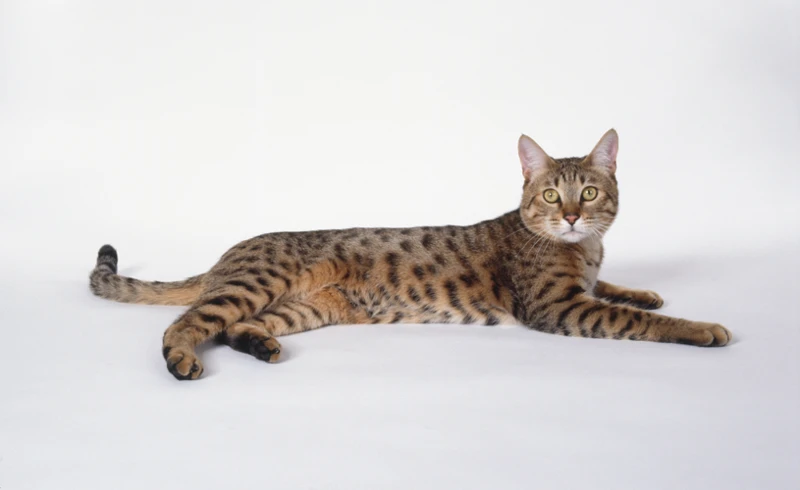
As the day of your California Spangled cat’s vaccination appointment approaches, you may be feeling a little anxious about what to expect during the vet visit. Understanding the process can help ease your nerves and make the experience more comfortable for both you and your furry friend. From the physical exam to the vaccination procedure itself, here’s a breakdown of what you can expect during the visit.
1. The Physical Exam
During the physical exam at the vet, your California Spangled cat will undergo a full-body check-up to ensure that they are healthy and ready for vaccinations. The exam will likely include the following steps:
- Ear Exam: The vet will examine your cat’s ears for any signs of infection, ear mites, or other issues. If there are any problems, the vet may recommend treatment.
- Eye Exam: The vet will check your cat’s eyes for any signs of infection, injury, or disease. They may also perform a tear test to check for dry eye.
- Nose Exam: The vet will examine your cat’s nose for any signs of discharge, congestion, or other issues.
- Mouth Exam: The vet will check your cat’s mouth for any signs of dental issues, gum disease, or other problems. They may also check your cat’s throat and tonsils.
- Heart and Lung Exam: The vet will use a stethoscope to listen to your cat’s heart and lungs to make sure they are functioning properly.
- Abdominal Exam: The vet will palpate your cat’s abdomen to check for any lumps, bumps, or other abnormalities. They may also check your cat’s anal glands.
- Skin and Coat Exam: The vet will check your cat’s skin and coat for any signs of irritation, infection, or other issues. They may also perform a skin scraping to check for external parasites like fleas or ticks.
Make sure to ask the vet any questions you may have during the exam, and don’t be afraid to speak up if you notice anything unusual about your cat’s behavior or appearance. The physical exam is an important step in keeping your California Spangled cat healthy and happy.
2. The Vaccination Procedure
During the vaccination procedure, the veterinarian will administer shots to your cat in order to build immunity against various diseases. The specific vaccines your cat will receive will depend on their age and lifestyle, as well as the veterinarian’s evaluation of their medical history.
The most common vaccines that your cat may receive include the rabies vaccine and the FVRCP vaccine, which provides protection against feline viral rhinotracheitis, calicivirus, and panleukopenia. The FVRCP vaccine is typically given as a combination vaccine with other vaccines such as feline leukemia or other respiratory viruses.
How Are Vaccines Administered?
The veterinarian will administer vaccines via injection, typically in the scruff of your cat’s neck or on the flank. To make the injection less painful, the veterinarian may apply pressure to the injection site or use a numbing spray beforehand.
What to Expect During the Procedure?
Your cat may experience some discomfort or pain during the procedure, but this should be brief and temporary. You can consult your vet about the possibility of using pain medications or remedies after the procedure. The vaccination process usually only takes a few minutes, but your vet may keep your cat for observation after the procedure to ensure they don’t experience any negative side effects.
Are There Potential Side Effects?
While vaccines are generally safe, there is always the possibility of side effects. The most common side effects include lethargy, lack of appetite, or a low-grade fever. In very rare cases, more severe side effects such as an allergic reaction may occur, so it’s important to monitor your cat closely afterward.
To easily understand the vaccination procedure, you can refer to the following table:
| Vaccine Type | Administration Method | Common Side Effects |
|---|---|---|
| Rabies | Subcutaneous injection in right hind leg | Localized soreness or swelling at injection site, fever, vomiting |
| FVRCP | Subcutaneous injection in scruff or flank | Fever, lethargy, loss of appetite, sneezing, coughing, or discharge from eyes or nose |
| Feline Leukemia | Subcutaneous injection in scruff or flank | Fever, lethargy, loss of appetite, swelling at injection site, vomiting, diarrhea |
Note: The above table is for reference only, and your cat’s vaccination procedure may differ based on their medical history and requirements. Consult with your veterinarian for specific details about the vaccines your cat will receive.
3. Potential Side Effects of Vaccinations
Vaccines are an important part of keeping your California Spangled Cat healthy and protected from diseases. While vaccinations are generally safe, there can be some potential side effects. It’s important to keep an eye on your cat after vaccinations to ensure they are not experiencing any adverse effects.
Possible side effects of vaccines for your cat may include:
| Mild Side Effects | Severe Side Effects |
|---|---|
| – Mild fever | – Allergic reaction |
| – Lethargy or weakness | – Swelling or hives at the injection site |
| – Reduced appetite | – Vomiting or diarrhea |
| – Sneezing or runny nose | – Difficulty breathing |
| – Mild swelling around the injection site | – Collapse or seizures |
If you notice any mild side effects, they should usually go away on their own within a day or two. However, if your cat experiences any severe side effects, it’s important to seek immediate veterinary attention.
It’s also important to keep in mind that vaccines can have potential side effects in rare cases due to certain health conditions or medications your cat may be taking. It’s always best to discuss potential side effects with your veterinarian and inform them of any health conditions or medications your cat is taking before vaccination.
The benefits of vaccination greatly outweigh the potential risks of side effects. By ensuring your California Spangled Cat is up to date on their vaccinations, you can help protect them from serious and potentially life-threatening diseases.
After the Vet Visit
As you and your California Spangled cat head home from the vet visit, it’s important to transition back to your daily routine. After the vaccination, your cat may experience mild side effects, so it’s essential to know what to expect and how to care for your feline friend. Here are some steps you can take to ensure your cat remains healthy and happy after their visit to the vet.
1. Give Your Cat Plenty of Rest and Water
After the vet visit and vaccination, it is important to give your California Spangled cat the proper care to ensure a quick and comfortable recovery. Giving your cat plenty of rest and water is crucial during this time.
Rest: Vaccinations can cause some discomfort and soreness to your cat, which may make them feel a bit lethargic. Providing a comfortable, quiet and warm space for your cat to rest is essential. You can create a cozy spot by adding a soft blanket or cushion in their favorite spot in the house. Avoid placing your cat in direct sunlight or in drafty areas, as they may feel too warm or chilly.
Water: Keep your cat well hydrated after the vaccination. Make sure they have plenty of fresh water available and that the water bowl is cleaned and refilled regularly. Encourage your cat to drink water by placing their water bowl in a clean and accessible location. You can also provide a few ice cubes in their bowl to make it more enticing for them to drink.
Feeding: Unless advised otherwise by your vet, it is safe to offer your cat their regular food after the visit. However, avoid giving them large meals right away as they may have a sensitive digestive system after the vaccination. Provide small frequent meals throughout the day instead.
Observation: Keep a close eye on your cat’s behavior and physical condition after the visit. Look for any signs of discomfort, lethargy or loss of appetite. Contact your veterinarian if you notice any concerning issues, as early intervention can prevent potential health problems.
Ensuring that your California Spangled cat gets plenty of rest and water following their vaccination can help them recover more quickly and comfortably. Remember to also pay close attention to their behavior and physical condition after the visit. Taking these simple steps can help ensure that your furry friend stays healthy and happy.
2. Observe Your Cat for Side Effects
After your cat receives vaccinations, it is important to keep a close eye on them for any potential side effects. Below is a list of symptoms to watch out for and what to do if any occur:
- Loss of Appetite: If your cat is not eating or drinking, it can lead to dehydration. Encourage them to drink water and monitor their intake. If they continue to refuse food and water for more than 24 hours, contact your veterinarian.
- Lethargy: If your cat is sleeping more than usual and appears sluggish, it could be a side effect of the vaccination. Monitor your cat’s activity levels and contact your veterinarian if the lethargy persists for more than 48 hours after the vaccination.
- Vomiting or Diarrhea: If your cat experiences vomiting or diarrhea following vaccination, monitor how often it happens and the consistency. If it continues for more than 24 hours, or if there is blood in the vomit or stool, contact your veterinarian immediately.
- Swelling or Redness at the Injection Site: It is normal for your cat to experience some sensitivity and mild swelling at the site of the injection. However, if the swelling and redness persist for more than a week or if there is heat coming from the site, contact your veterinarian.
- Sneezing or Nasal Discharge: If your cat experiences symptoms similar to the common cold, such as sneezing, coughing, or a runny nose, it may be a side effect of the vaccination. Monitor your cat’s symptoms and contact your veterinarian if they persist for more than 48 hours.
It is important to keep in mind that side effects from vaccinations are typically mild and short-lived. However, if you notice any symptoms that persist or seem severe, it is always best to contact your veterinarian.
3. Reward Your Cat for Good Behavior
After going through the vaccination procedure, it’s essential to reward your California Spangled cat for their good behavior. It will help create a positive association with the vet visits, and your feline friend will be more willing to go to the vet in the future. Here are some ways you can reward your cat for their good behavior:
- Treats: Bring their favorite treats and give them a few once the vet visit is complete. You can even get treats specifically designed to calm cats’ nerves, which will help them feel more relaxed.
- Playtime: Take time to play with your cat once you’re back home. It’s a great way to show that you appreciate their good behavior. It will also help them burn off any pent-up energy or anxiety they might still be experiencing after their visit to the vet.
- Compliments: Remember to praise your cat and give them plenty of affection. This will make them feel loved and appreciated, and they are more likely to be willing to go to the vet in the future.
Remember, always reward your California Spangled cat with positivity and kindness. It will help build a strong, trusting bond between you and your furry friend. By following these steps, you can ensure that your cat is comfortable and prepared for their next visit to the vet.
Conclusion
In conclusion, preparing your California Spangled Cat for vaccinations is an important part of their long-term health and wellbeing. By taking the necessary steps to ease your cat’s anxiety and stress levels before and during the vet visit, you can make the experience a much more positive one for both you and your furry friend.
Remember to find a calm atmosphere for your cat, get them used to handling and the carrier, and make sure they’re comfortable in the car. Utilize anxiety reduction techniques and avoid feeding your cat before the visit. Don’t forget to bring your cat’s medical records and a favorite toy or blanket for comfort.
During the vet visit, expect a thorough physical exam and the vaccination procedure itself. Be aware of potential side effects, and give your cat plenty of rest and water afterward. Observe your cat for any unusual behavior or symptoms and reward them for their good behavior.
Overall, vaccination is an essential part of your cat’s health and longevity. By following these steps and staying positive throughout the process, you can make a vet visit a breeze for your California Spangled Cat. Keep up with their vaccines and routine check-ups, and enjoy many happy, healthy years with your feline companion.
Frequently Asked Questions
1. Can cats get sick from vaccinations?
It is possible for cats to experience side effects from vaccinations, but the benefits of protecting them from potentially deadly diseases outweigh the risks.
2. How often does my California Spangled cat need to be vaccinated?
Vaccination schedules can vary based on your cat’s age, health, and lifestyle, but most cats require regular booster shots throughout their lives.
3. What should I do if my cat has a reaction to a vaccine?
Contact your veterinarian immediately if your cat displays signs of an adverse reaction, such as vomiting, diarrhea, or lethargy.
4. Is it safe to vaccinate my indoor cat?
Even if your cat spends most of their time indoors, they can still be exposed to disease through contact with other animals or through the air or surfaces. Vaccinations can help protect them.
5. How soon after getting vaccinated can my cat go outside?
Your veterinarian may recommend keeping your cat indoors for a certain period of time after receiving vaccinations in order to allow their immune system to fully respond to the vaccine.
6. What should I do if I miss a scheduled vaccine appointment?
Contact your veterinarian to reschedule the appointment as soon as possible. It’s important to stay up-to-date on vaccines to ensure your cat remains protected.
7. Do I need to bring anything to my cat’s vaccination appointment?
It’s a good idea to bring your cat’s medical records and any relevant information about their health history, as well as anything that will help keep them calm and comfortable during the visit.
8. Can vaccinations cause my cat to test positive for diseases like feline leukemia or FIV?
No, vaccinations cannot cause a cat to test positive for diseases such as feline leukemia or FIV. However, if your cat has already been infected with one of these diseases, the vaccination may not be effective.
9. How can I tell if my cat needs a vaccine booster?
Your veterinarian can help you determine when your cat is due for a vaccine booster based on their age, lifestyle, and health history.
10. Are there any alternatives to traditional vaccinations for cats?
There are some alternative vaccination approaches, such as using nosodes or homeopathic remedies, but their effectiveness and safety are not well-supported by scientific evidence.

